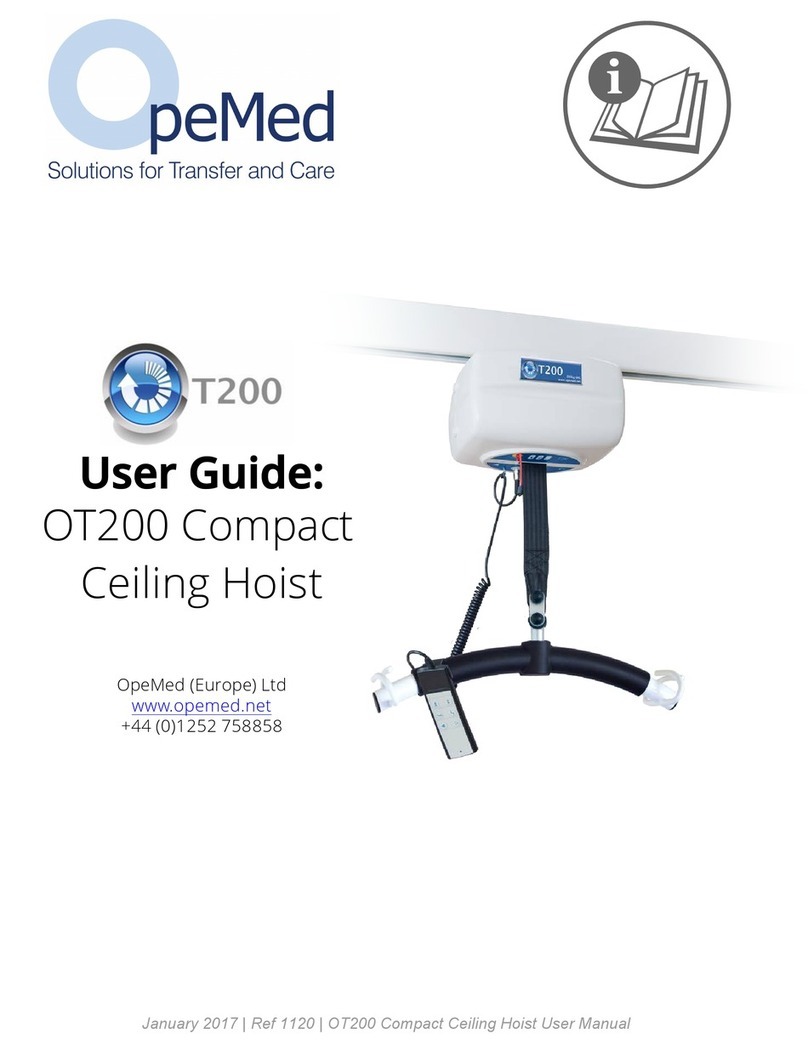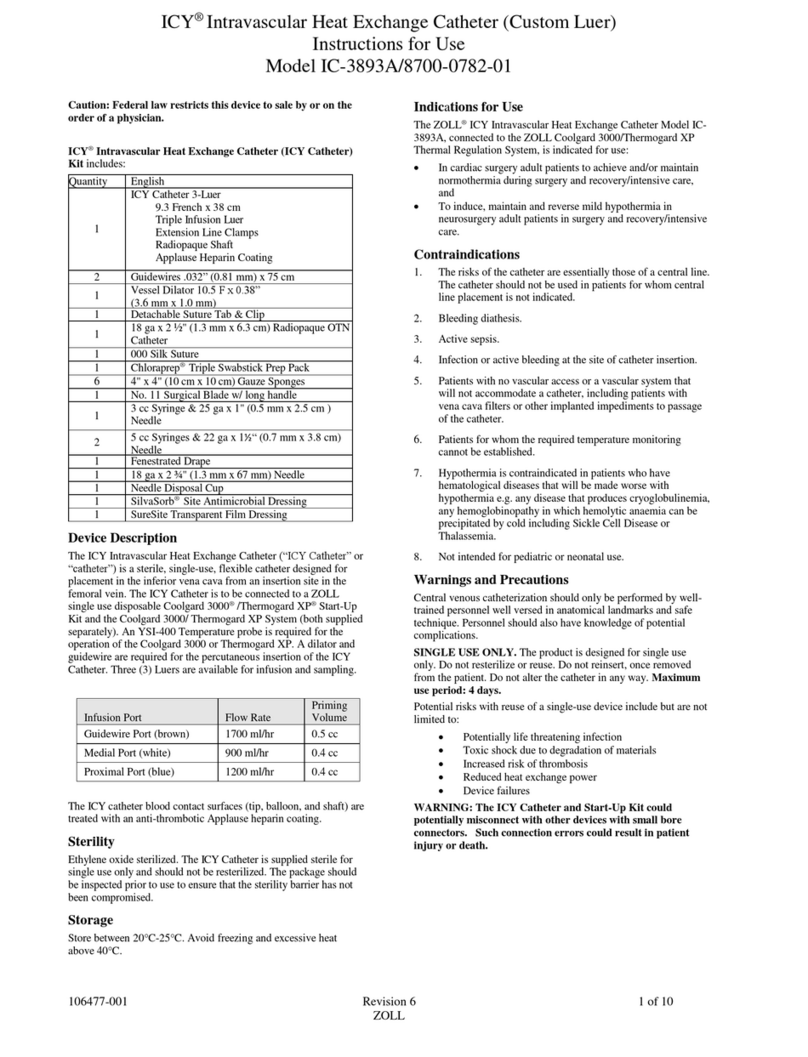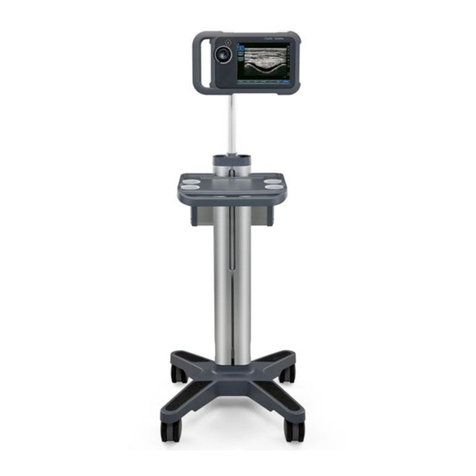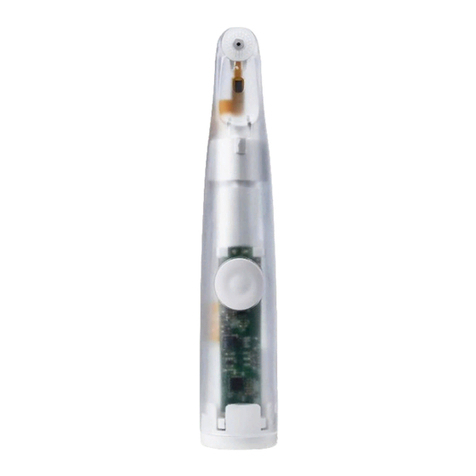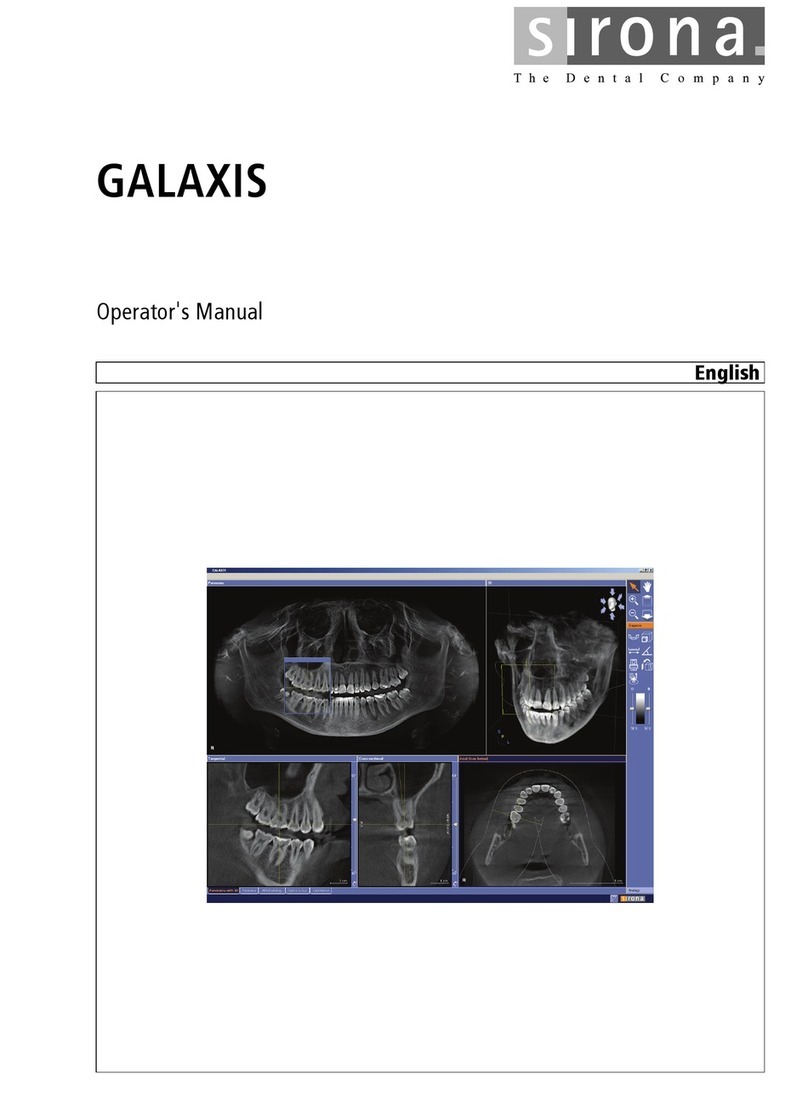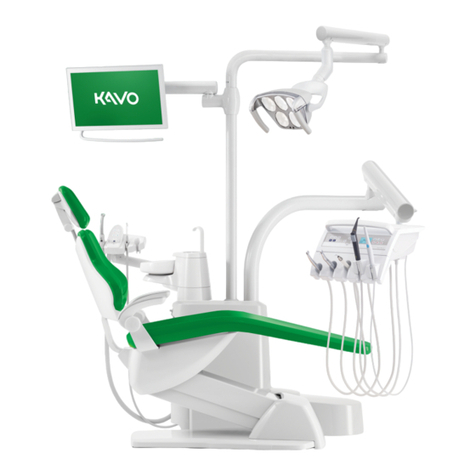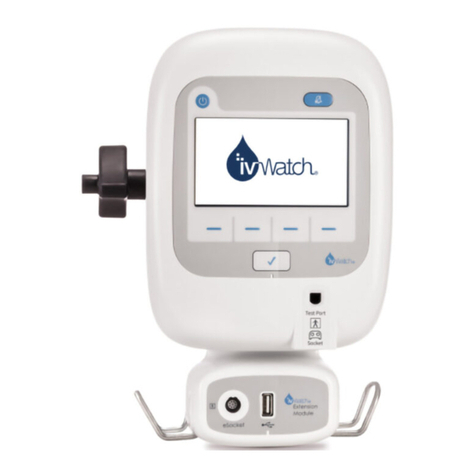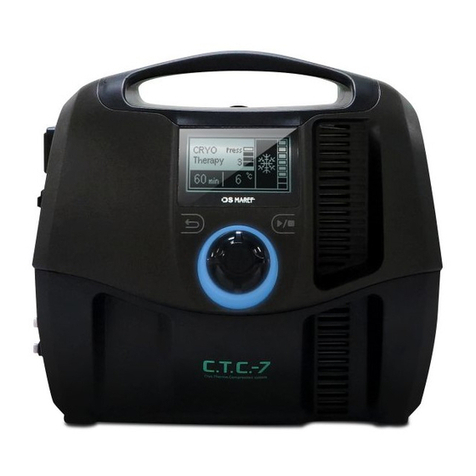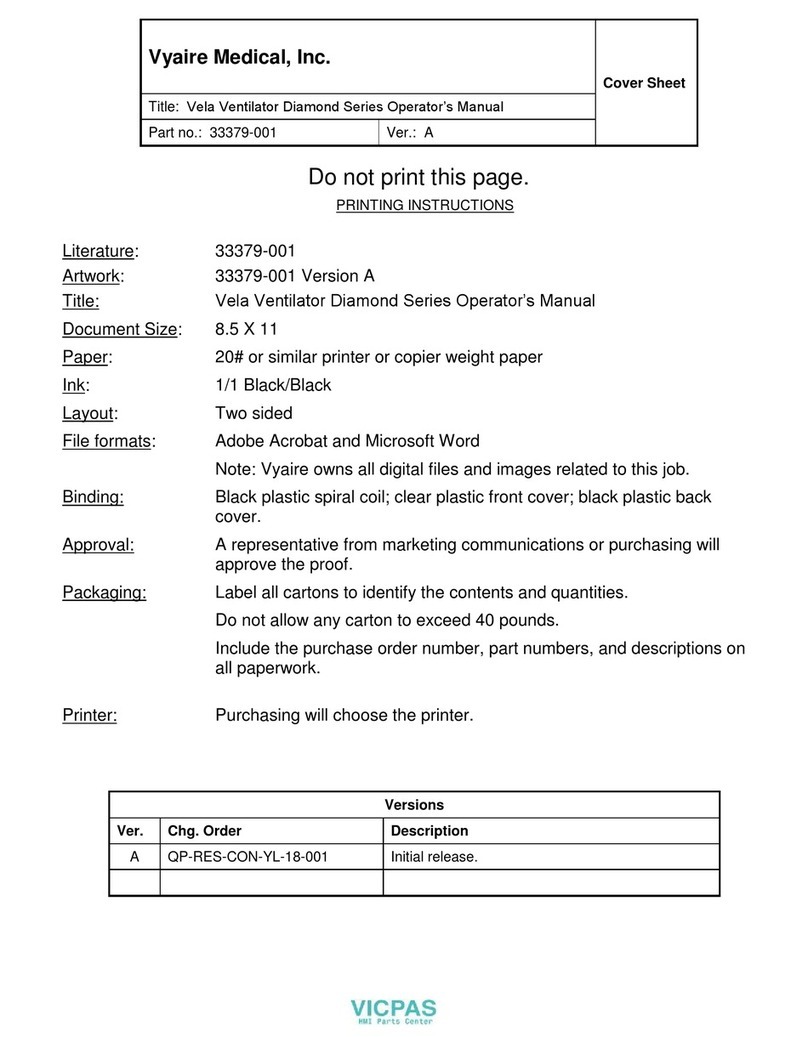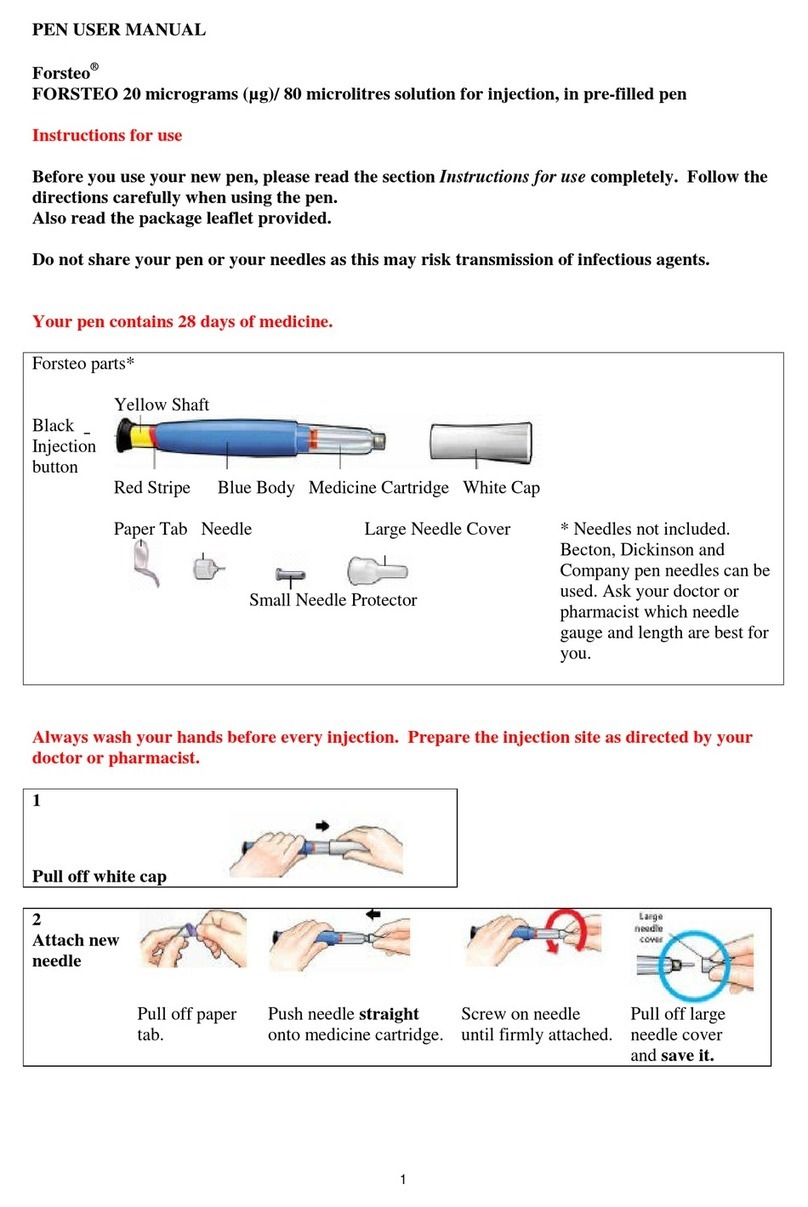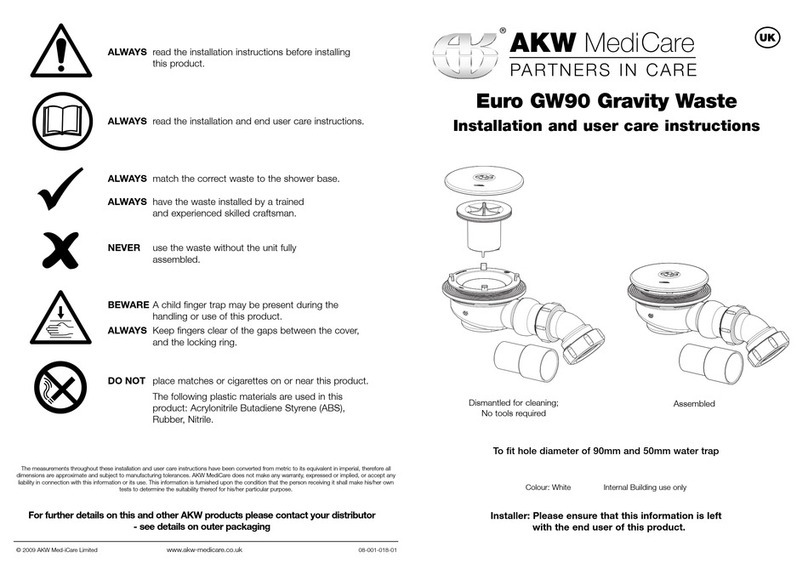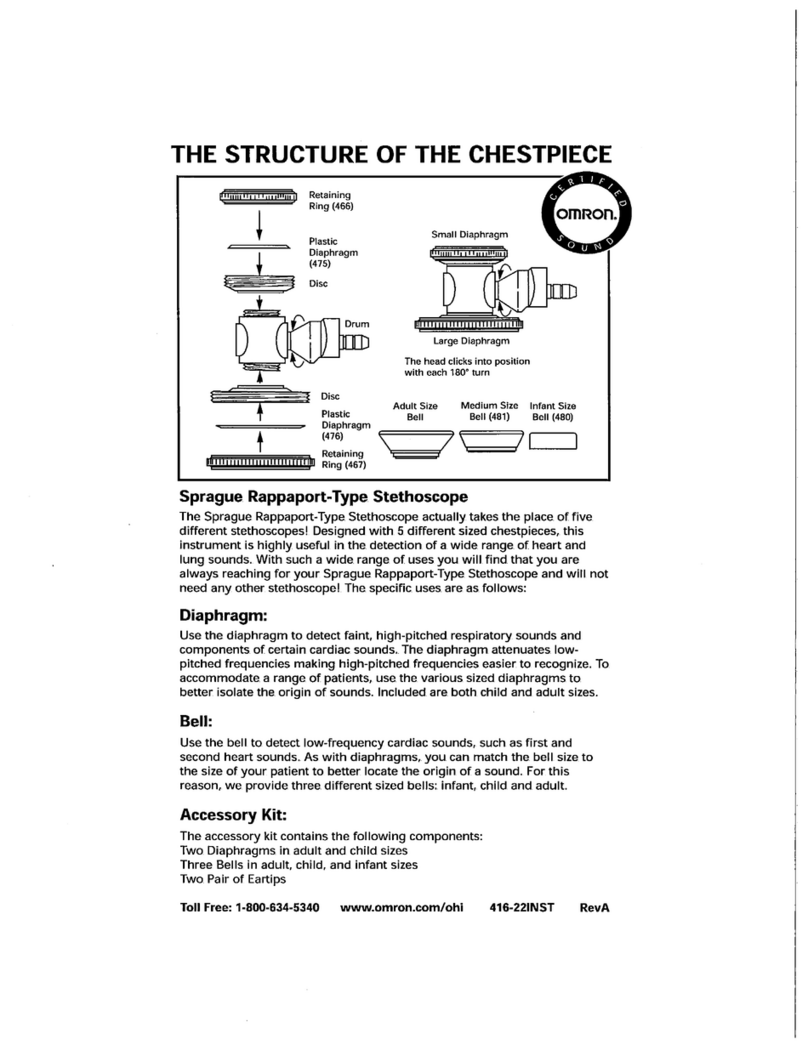Fluke Biomedical medTester 5000C Operators User manual

medTester 5000C
Biomedical Tester
Operators Manual
PN 2243153
February 2006
2006 Fluke Corporation, All rights reserved. Printed in USA
All product names are trademarks of their respective companies.

Warranty and Product Support
Fluke Biomedical warrants this instrument against defects in materials and workmanship for one full
year from the date of original purchase. During the warranty period, we will repair or, at our option,
replace at no charge a product that proves to be defective, provided you return the product,
shipping prepaid, to Fluke Biomedical. This warranty does not apply if the product has been
damaged by accident or misuse or as the result of service or modification by other than Fluke
Biomedical. IN NO EVENT SHALL FLUKE BIOMEDICAL BE LIABLE FOR
CONSEQUENTIAL DAMAGES.
Only serialized products and their accessory items (those products and items bearing a distinct serial
number tag) are covered under this one–year warranty. PHYSICAL DAMAGE CAUSED BY
MISUSE OR PHYSICAL ABUSE IS NOT COVERED UNDER THE WARRANTY. Items such
as cables and nonserialized modules are not covered under this warranty.
Recalibration of instruments is not covered under the warranty.
This warranty gives you specific legal rights, and you may also have other rights which vary from
state to state, province to province, or country to country. This warranty is limited to repairing the
instrument to Fluke Biomedical’s specifications.
Warranty Disclaimer
Should you elect to have your instrument serviced and/or calibrated by someone other than Fluke
Biomedical, please be advised that the original warranty covering your product becomes void when
the tamper-resistant Quality Seal is removed or broken without proper factory authorization. We
strongly recommend, therefore, that you send your instrument to Fluke Biomedical for factory
service and calibration, especially during the original warranty period.

Notices
All Rights Reserved
Copyright 2006, Fluke Biomedical. No part of this publication may be reproduced, transmitted,
transcribed, stored in a retrieval system, or translated into any language without the written
permission of Fluke Biomedical.
Copyright Release
Fluke Biomedical agrees to a limited copyright release that allows you to reproduce manuals and
other printed materials for use in service training programs and other technical publications. If you
would like other reproductions or distributions, submit a written request to Fluke Biomedical.
Unpacking and Inspection
Follow standard receiving practices upon receipt of the instrument. Check the shipping carton for
damage. If damage is found, stop unpacking the instrument. Notify the carrier and ask for an agent
to be present while the instrument is unpacked. There are no special unpacking instructions, but be
careful not to damage the instrument when unpacking it. Inspect the instrument for physical
damage such as bent or broken parts, dents, or scratches.
Technical Support
For application support or answers to technical questions, either email
Claims
Our routine method of shipment is via common carrier, FOB origin. Upon delivery, if physical
damage is found, retain all packing materials in their original condition and contact the carrier
immediately to file a claim. If the instrument is delivered in good physical condition but does not
operate within specifications, or if there are any other problems not caused by shipping damage,
please contact Fluke Biomedical or your local sales representative.
Standard Terms and Conditions
Refunds and Credits
Please note that only serialized products and their accessory items (i.e., products and items
bearing a distinct serial number tag) are eligible for partial refund and/or credit. Nonserialized
parts and accessory items (e.g., cables, carrying cases, auxiliary modules, etc.) are not eligible
for return or refund. Only products returned within 90 days from the date of original purchase are
eligible for refund/credit. In order to receive a partial refund/credit of a product purchase price on
a serialized product, the product must not have been damaged by the customer or by the carrier
chosen by the customer to return the goods, and the product must be returned complete (meaning
with all manuals, cables, accessories, etc.) and in “as new” and resalable condition. Products not
returned within 90 days of purchase, or products which are not in “as new” and resalable condition,
are not eligible for credit return and will be returned to the customer. The Return Procedure (see
below) must be followed to assure prompt refund/credit.

Restocking Charges
Products returned within 30 days of original purchase are subject to a minimum restocking fee
of 15 %. Products returned in excess of 30 days after purchase, but prior to 90 days, are
subject to a minimum restocking fee of 20 %. Additional charges for damage and/or missing
parts and accessories will be applied to all returns.
Return Procedure
All items being returned (including all warranty-claim shipments) must be sent freight-prepaid to
our factory location. When you return an instrument to Fluke Biomedical, we recommend using
United Parcel Service, Federal Express, or Air Parcel Post. We also recommend that you insure
your shipment for its actual replacement cost. Fluke Biomedical will not be responsible for lost
shipments or instruments that are received in damaged condition due to improper packaging or
handling.
Use the original carton and packaging material for shipment. If they are not available, we
recommend the following guide for repackaging:
Use a double–walled carton of sufficient strength for the weight being shipped.
Use heavy paper or cardboard to protect all instrument surfaces. Use nonabrasive material
around all projecting parts.
Use at least four inches of tightly packed, industry-approved, shock-absorbent material
around the instrument.
Returns for partial refund/credit:
Every product returned for refund/credit must be accompanied by a Return Material
Authorization (RMA) number, obtained from our Order Entry Group at 1-800-648-7952 or 1-
425-446-6945.
Repair and calibration:
To find the nearest service center, goto www.flukebiomedical.com/service or
In the U.S.A.:
Cleveland Calibration Lab
Tel: 1-800-850-4606
Everett Calibration Lab
Tel: 1-888-99 FLUKE (1-888-993-5853)
In Europe, Middle East, and Africa:
Eindhoven Calibration Lab
Tel: +31-402-675300
In Asia:
Everett Calibration Lab
Tel: +425-446-6945
Certification
This instrument was thoroughly tested and inspected. It was found to meet Fluke Biomedical’s
manufacturing specifications when it was shipped from the factory. Calibration measurements are

traceable to the National Institute of Standards and Technology (NIST). Devices for which there
are no NIST calibration standards are measured against in-house performance standards using
accepted test procedures.
WARNING
Unauthorized user modifications or application beyond the published specifications may result in
electrical shock hazards or improper operation. Fluke Biomedical will not be responsible for any
injuries sustained due to unauthorized equipment modifications.
Restrictions and Liabilities
Information in this document is subject to change and does not represent a commitment by
Fluke Biomedical. Changes made to the information in this document will be incorporated in
new editions of the publication. No responsibility is assumed by Fluke Biomedical for the use
or reliability of software or equipment that is not supplied by Fluke Biomedical, or by its
affiliated dealers.
Manufacturing Location
The medTester 5000C is manufactured in Everett, WA, U.S.A.


Biomedical Test System
Contents
Table of Contents
1: GENERAL INFORMATION
SAFETY CONSIDERATIONS ..........................................................1-1
General.....................................................................................1-1
Safety Symbols ........................................................................1-1
Introduction ..................................................................................1-2
How to Use This Manual...............................................................1-3
If You’ve Used The medTester 5000C Before... ......................1-3
If You’re New to The medTester 5000C... ...............................1-3
Where to Find Help ..................................................................1-4
Features........................................................................................1-5
Electrical Safety Testing .........................................................1-5
Performance Testing ...............................................................1-5
Manual Measurements.............................................................1-5
Automatic Measurements........................................................1-5
Computer Control.....................................................................1-6
medCheck ................................................................................1-6
medTester 5000C Optional Modules ............................................1-7
Features......................................................................................1-11
Optional Accessories .................................................................1-11
medTester 5000C Instrument Specifications ............................1-12
Line Voltage and Measurements ...........................................1-12
Leakage Current ....................................................................1-12
Equipment Current.................................................................1-13
Resistance .............................................................................1-13
Isolated Power .......................................................................1-13
Toolbox ..................................................................................1-14
Test Receptacle.....................................................................1-14
Ground Fault Circuit Interrupter............................................ 1-15
Performance Waveforms........................................................1-15
General Specifications ...............................................................1-16
ECG Connections ...................................................................1-16
Data Input and Output ...........................................................1-16
RS-232C Serial Interface Parameters....................................1-16
Real Time Clock.....................................................................1-16
Accessories ................................................................................1-17
medTester 5000C Module Upgrades .....................................1-19
2: INSTALLATION
Factory Default Settings ..............................................................2-1
Power-Up Sequence .....................................................................2-2
Initialization..................................................................................2-3

Date and Time Setup ................................................................... 2-3
Audio Transducer......................................................................... 2-4
Enabling Modules ......................................................................... 2-5
Confirming Module Installation ............................................... 2-7
3: INSTRUMENT FAMILIARITY
Know Your medTester 5000C ...................................................... 3-1
Top Panel Controls, Displays, and Connectors....................... 3-1
Rear Panel Controls, Displays, and Connectors ..................... 3-3
Power Up ................................................................................. 3-4
Navigating the Menus ............................................................. 3-4
4: MANUAL TESTS
Performing Manual Tests ........................................................... 4-35
Printing Manual Measurements ............................................ 4-35
Line Voltage .......................................................................... 4-35
Leakage Current.................................................................... 4-36
ECG Lead Leakage ................................................................ 4-38
Equipment Current ................................................................ 4-42
Resistance............................................................................. 4-42
Isolated Power and Ground Fault Test ................................. 4-44
Toolbox.................................................................................. 4-45
5: AUTOSEQUENCES
What Is an Autosequence ............................................................ 5-1
Description of Standard Safety Autosequences ......................... 5-2
Autosequence Selection ......................................................... 5-3
Standard Safety Autosequence Names .................................. 5-4
Autosequence Device Prompts ............................................... 5-5
Autosequence Steps .................................................................... 5-7
System Line Voltage ............................................................... 5-8
Power Cord Resistance........................................................... 5-8
Leakage Current Measurements............................................. 5-9
Equipment Current Measurement ........................................... 5-9
ECG Performance Waveforms ............................................... 5-10
End-of-Test Prompts.............................................................. 5-11
Test Tag Printer ......................................................................... 5-13
Optional Monitoring Autosequences ......................................... 5-15
Line Voltage Monitor ............................................................. 5-16
Environmental Monitor .......................................................... 5-17
Toolbox Monitors ....................................................................... 5-19
Temperature Monitor ............................................................ 5-19
Humidity Monitor ................................................................... 5-21
6: CUSTOMIZE YOUR MEDTESTER
How to Customize a Preprogrammed Safety Autosequence ...... 6-1

Biomedical Test System
Contents
What You See in an Autosequence..........................................6-2
How to Customize....................................................................6-3
Customizing a Blank Safety Autosequence .................................6-7
Test Record Header......................................................................6-7
Customizing Your Autosequence Prompts...................................6-8
Turning Prompts On and Off .........................................................6-9
Renaming Prompts .....................................................................6-10
Pausing .......................................................................................6-11
Test Tag Configuration...............................................................6-11
Summary of Stored Records.......................................................6-12
Customizing Bar Code Record Data Entry .................................6-13
Resetting Autosequences to Default Settings...........................6-14
Printing Your medTester 5000C Configuration ..........................6-15
Customize medTester 5000C Options........................................6-15
7: PERFORMANCE WAVES
Outputting Performance Waves ...................................................7-1
Waveform Groups .........................................................................7-2
Running Waveforms from The WAVES Menu................................7-4
Conducting Waveform Tests in Safety Autosequences...............7-5
8: MEMORY
Introduction ..................................................................................8-1
Viewing A Single Record ..............................................................8-2
Printing Records ...........................................................................8-2
Print A Single Record...............................................................8-2
Print A Range of Records.........................................................8-3
Print All Records ......................................................................8-3
Print Records by Type..............................................................8-3
Printing A Summary of Records...............................................8-5
Printing Failed Test Records ...................................................8-5
Configuring Your Printer...............................................................8-5
Deleting Records .....................................................................8-6
Erasing Memory, All Records, and Checklists ........................8-6
Checking Contents of Memory .....................................................8-6
Searching for Records ..................................................................8-7
Searching for Records with Test Failures...............................8-8
Printing Checklists ..................................................................8-8
Keyboard Shortcut Commands.....................................................8-9
9: DEFIBRILLATOR MODULE
Defibrillator Autosequences.........................................................9-1
Defibrillator Autosequence Names..........................................9-3
Running Defibrillator Autosequence Tests ..................................9-5
Pretest Device Prompts ...........................................................9-6

Test Sequence......................................................................... 9-7
Posttest Prompts................................................................... 9-12
Customizing Defibrillator Autosequences ................................. 9-12
Make Your Own Autosequence ............................................. 9-12
10: IV PUMP MODULE
IV Pump Autosequences ............................................................ 10-1
Basic Test Format ................................................................. 10-1
IV Pump Analyzers ................................................................ 10-2
IV Pump Autosequence Names ................................................. 10-4
Running IV Pump Autosequences.............................................. 10-7
Select the Autosequence...................................................... 10-7
Pretest Device Prompts ........................................................ 10-7
IV PUMP TESTS.......................................................................... 10-9
Infutest 2000 Series D........................................................... 10-9
IPT-1 .................................................................................... 10-12
IPT-MC ................................................................................. 10-12
IDA 4 Plus ............................................................................ 10-13
Pressure Test (Infutest, IPT-1, IPT-MC and IDA 4 Plus) ..... 10-17
Posttest Prompts................................................................. 10-18
Customizing IV Pump Tests..................................................... 10-22
Make Your Own Autosequence ........................................... 10-22
Making an Autosequence.................................................... 10-23
Infutest ................................................................................ 10-23
IPT-1 .................................................................................... 10-25
IPT-MC ................................................................................. 10-26
Print Your Autosequence .................................................... 10-26
Reinitialize Factory Default Settings .................................. 10-26
11: MEDCHECK MODULE
Tap Your medTester’s Potential ................................................ 11-1
What’s a Checklist? ................................................................... 11-2
Understanding and Using Checklists ........................................ 11-3
You’ve Made a Checklist—Now What? ...................................... 11-6
Running Checklists in medTester 5000C .................................. 11-6
Find a Checklist..................................................................... 11-7
Run a Checklist ..................................................................... 11-7
Items in a Checklist .............................................................. 11-9
View or Print a Checklist .................................................... 11-12
Remote Control of Fluke Biomedical Testers ......................... 11-13
12: REMOTE OPERATION
Local Versus Remote Mode ....................................................... 12-1
Communicating through medTester Serial Ports ................. 12-1
Communications Settings ..................................................... 12-2

Biomedical Test System
Contents
Local Input Mode ........................................................................12-3
Local Output for Records and Tags ...........................................12-4
Record Output........................................................................12-5
Test Tag Output .....................................................................12-5
Remote Mode..............................................................................12-6
Going Remote ........................................................................12-6
File Transfer Protocol ............................................................12-9
Remote Commands List ...........................................................12-12
Port Diagnostics .......................................................................12-17
13: THE WEDGE ADAPTER
Features of the Wedge ...............................................................13-1
Serial Port Expansion .................................................................13-2
Keyboard Interface.....................................................................13-2
Port Configuration ......................................................................13-2
Installing the Wedge...................................................................13-4
Disassembly of the medTester 5000C’s Feet and Tilt Bail ...13-5
Attaching the Wedge to the medTester 5000C .....................13-5
Operating the Wedge ..................................................................13-7
Wedge Port Names ................................................................13-7
Enabling The Wedge ..............................................................13-7
Configuring Wedge Ports .......................................................13-7
Configuring One Port for Two Purposes ..............................13-11
Setting Baud Rates...................................................................13-11
Setting Output Ports.................................................................13-13
14: ESU MODULE
ESU Autosequences ...................................................................14-1
ESU Autosequence Names ....................................................14-4
Running ESU Autosequence Tests.............................................14-5
Pretest Device Prompts .........................................................14-6
Test Sequence .......................................................................14-7
ESU Test Types...................................................................... 14-7
ESU Autosequence Descriptions..............................................14-10
Posttest Prompts .................................................................14-14
Customizing ESU Autosequences ............................................14-15
Make Your Own Autosequence ...........................................14-15
SPO2 MODULE
SPO2 Autosequences .................................................................15-1
SPO2 Autosequence Names ..................................................15-4
Running SPO2 Autosequence Tests...........................................15-6
Pretest Device Prompts .........................................................15-8
Test Sequence .......................................................................15-9
Probe Test............................................................................15-12

For the Oxitest PLUS: .............................................................. 15-13
For CardioSat 100: ................................................................... 15-16
For the Index 2XL:.................................................................... 15-19
Posttest Prompts................................................................. 15-22
Customizing SPO2 Autosequences.......................................... 15-22
Make Your Own Autosequence ........................................... 15-22
Configuring for Your SPO2 Simulator.................................. 15-23
Making an Autosequence.................................................... 15-23
16: TRANSCUTANEOUS
PACEMAKER (PACER) MODULE
Pacer Autosequences ................................................................ 16-1
Pacer Autosequence Names ................................................. 16-3
Running Pacer Autosequence Tests.......................................... 16-4
Pretest Device Prompts ........................................................ 16-5
Test Sequence....................................................................... 16-6
Posttest Prompts................................................................. 16-14
Customizing Pacer Autosequences ......................................... 16-15
Make Your Own Autosequence ........................................... 16-15
17: NON-INVASIVE BLOOD
PRESSURE (NIBP) MODULE
NIBP Autosequences ................................................................. 17-1
NIBP Autosequence Names .................................................. 17-3
Running NIBP Autosequence Tests........................................... 17-4
Pretest Device Prompts ........................................................ 17-5
Test Sequence....................................................................... 17-6
Posttest Prompts................................................................. 17-11
Customizing NIBP Autosequences .......................................... 17-12
Make Your Own Autosequence ........................................... 17-12

1-1
Chapter 1
General Information
In this chapter you will learn how to use this manual,
where to get help, and about medTester 5000C Features
and Specifications.
SAFETY CONSIDERATIONS
General
This instrument and related documentation must be reviewed for
familiarization with safety markings and instructions before you operate the
instrument. Refer to the medTester 5000C Operators Manual for operating
instructions.
Safety Symbols
The symbol to the left is the operators manual symbol. When
you see this symbol on the instrument, refer to the operators
manual.
WARNING! Denotes a hazard. WARNING! calls attention to a procedure,
practice, or the like, which, if not correctly performed or adhered to, could
result in personal injury. Do not proceed beyond a WARNING! sign until the
indicated conditions are fully understood and met.
CAUTION. Denotes a hazard. CAUTION calls attention to a procedure,
practice, or the like, which, if not correctly performed or adhered to, could
result in damage to or destruction of part or all of the instrument. Do not
proceed beyond a CAUTION sign until the indicated conditions are fully
understood and met.
!

medTester 5000C
Operators Manual
1-2
Introduction
This manual is written for the biomedical technician or clinical engineer
responsible for testing hospital equipment, or the plant maintenance
technician responsible for maintenance records.
The medTester 5000C is an automated biomedical equipment test system and
a portable data acquisition unit that can be controlled with a computer. You
can expand the capabilities of the base model by adding modules that let you
store test records to memory and print them out.
The medTester 5000C is designed to measure electrical current and resistance
as they relate to electrical safety. It measures conditions that might cause
injury for compliance with the specifications set forth by ANSI, NFPA, and
AAMI.
The medTester 5000C base model automates repetitive tasks with safety
autosequences for medical equipment, including lead tests on patient
monitors, as well as general electrical devices. You can customize
autosequences to meet your specific testing needs.
With the addition of optional modules (for example, the RS-232/Printer
module, 100 Record Memory module, Expanded Memory module, and the
Waveform/Extended Testing module) your medTester 5000C becomes even
more powerful. The Waveform/Extended Testing module gives you
additional safety autosequences and performance wave and arrhythmia
generation capabilities. Individual defibrillation and IV pump modules offer
safety and performance testing autosequences for those devices.
With the Data Transfer module, you can transfer stored equipment test
record files to a compatible database program, Computerized Maintenance
Management System (CMMS) or Equipment Management System (EMS).
The medCheck module enables the downloading of test checklists and the
uploading of data to your database, CMMS, or EMS.
Finally, in addition to operating your medTester 5000C in the local mode
from the keyboard, bar code port, or the optional external keyboard, you can
also operate it from a remote location. Remote operation can take place from
a remote personal computer or from a compatible terminal device.
With the Wedge adapter, you can expand the number of serial ports to
control several external instruments without changing setups. In addition, you
can connect a PC-style keyboard to the Wedge adapter for entering data more
easily.

Biomedical Test System
General Information 1
1-3
The medTester 5000C—reliable safety and performance testing. Capable of
managing your entire equipment program.
How to Use This Manual
Your medTester 5000C Operators Manual is designed for you. Whether you
are an experienced medTester operator or someone new to medTester, please
read this section before using your medTester 5000C.
If You’ve Used The medTester 5000C Before...
The medTester 5000C has been substantially upgraded to best satisfy your
needs. It now uses a new firmware release that offers increased reliability and
more consistent and stable data storage. RAM in the medTester 5000C is
dynamic, and data retrieval is simplified. In addition, some features that you
may be using have been enhanced with new features for your convenience.
Note in particular these chapters:
•Chapter 1 introduces the medTester 5000C’s enhanced features.
•Chapter 3 shows you how to navigate the medTester’s menus.
•Chapter 6 helps you customize autosequences.
•Chapters 11 and 12 bring you up to date on medCheck checklists
remote operation of the medTester 5000C.
If You’re New to The medTester 5000C...
Welcome to the medTester 5000C! It is the easy-to-use electrical safety and
performance analyzer with a high-quality data collection and retrieval
system—all designed to make your job easier and more productive. While the
ideal recommendation to a new user is to read the entire manual, we know
that you want to start using your new medTester now. Before you do, please
review Chapters 1 to 3 to learn about the medTester 5000C. Other chapters
of interest to you might be:
•Chapter 4 for information about basic medTester 5000C safety
test measurements.
•Chapter 5 for autosequences.

medTester 5000C
Operators Manual
1-4
Where to Find Help
If you have questions not answered in this manual, please refer to the
following Fluke Biomedical sources:
•medTester 5000C Service Manual, Part No. 2243166.
•Fluke Biomedical Customer Service Department. Telephone
800-648-7952
•Safe current limits for electromedical apparatus, (ANSI/AAMI ES1),
© 1993, Association for the Advancement of Medical
Instrumentation.
ISBN 1-57020-007-6.
AAMI Phone: 800-332-2264.
•Standard for Health Care Facilities, (NFPA 99), 1993 Edition,
© 1993, National Fire Protection Association, February 12, 1993,
NFPA.
NFPA Phone: 800-344-3555.

Biomedical Test System
General Information 1
1-5
Features
The medTester 5000C is an automated biomedical equipment test system
designed for you to do electrical safety and performance testing. With the
medTester, you can run customizable automatic sequences of tests, called
autosequences. You can print stored test records or upload them to a
computer. A computer can operate a medTester 5000C from a remote
location. This section defines some basic concepts behind the testing that this
manual describes.
Electrical Safety Testing
The medTester 5000C measures electrical current and resistance related to
electrical safety. Electrical safety testing is the measurement of electric
conditions that could result in injury to operators of that equipment or to
patients. All measurements you make with the medTester 5000C comply with
specifications set forth by ANSI, NFPA, and AAMI.
Performance Testing
Performance testing verifies that equipment performs to manufacturer
specifications. Different types of medical equipment require tests that are
unique to its operation—patient monitors, defibrillators, and IV pumps, to
name just a few. The medTester 5000C provides ECG waveforms for
performance testing of patient monitors. With optional autosequence
modules, you can use analyzers to test the performance of defibrillators, IV
pumps, electrosurgical units, pulse oximeter analyzers and more.
Manual Measurements
You can always perform safety measurements on any electrical equipment
directly from the medTester keyboard. Measurements appear on the display
continuously until you escape from the test. Instructions for conducting
manual tests are in Chapter 4, Manual Tests.
Automatic Measurements
One of the strengths of the medTester 5000C is the ability to automate
testing using autosequences. Autosequences are collections of tests that
execute as a group. Ten safety autosequences ship with the medTester 5000C
base model, each of which you can customize to meet your needs. With the
Waveform/Extended Testing Module, you receive an additional five
customizable safety autosequences, five ECG performance waveform and
arrhythmia groups, and line monitor and environmental autosequences.

medTester 5000C
Operators Manual
1-6
Prompts in the autosequence ask you for information that aids in test
reporting. The pretest prompts, for example, can ask you for the model and
serial number of the equipment you’re testing, the test location, operator
code, and physical condition of the EUT (equipment under test). Posttest
prompts can ask you to schedule the next test date, input comments about the
tests, or prepare a test tag.
With the Memory Module and RS-232/Printer Module installed on your
medTester 5000C, you can store test records to memory and print them from
the medTester’s printer port. Additional autosequence modules are available
for performance testing defibrillators, IV pumps, and more. See Chapter 5,
Autosequences.
Computer Control
You can remotely control your medTester 5000C from a personal computer
or compatible terminal device through a serial communication port and
appropriate communication software. Once connected and in remote control of
the medTester 5000C, you send remote commands to the medTester 5000C
to do safety and performance tests, with the results returned to the computer.
Some medTester 5000C users prefer to accumulate the test data for
equipment before reporting stored records. Then at their convenience they
upload the data to an equipment database program, Computerized
Maintenance Management System, or Equipment Management System (EMS)
on a computer. This is accomplished through a serial port on the
medTester 5000C and the medTester 5000C’s Data Transfer Module. Chapter
12, Remote Operation, discusses the methods you can use to control the
medTester 5000C and to manage test data.
If you use other Fluke Biomedical analyzers, such as the Impulse 4000 or IPT-
1, you can control them with the medTester 5000C. By connecting an
analyzer to the medTester 5000C’s COM2 port, you gain a two-way
communication link. This link lets the medTester 5000C control the
operation of the analyzer. Test data that the analyzer collects is then returned
to storage in the medTester 5000C.
medCheck
The medTester 5000C medCheck Module unleashes the power of the
medTester 5000C to become the centerpiece of a total equipment
management solution. medCheck lets you download checklists from, and
upload checklist test data to, your equipment management software system.

Biomedical Test System
General Information 1
1-7
Checklists are complete sets of preventive maintenance procedures for
equipment testing. They can contain prompts to the medTester 5000C user to
make physical inspections of the EUT and to take individual safety
measurements. A checklist can include one or more safety and performance
autosequences that automatically execute. Checklist test record data is then
uploaded to the user’s equipment management database program,
Computerized Maintenance Management System. See Chapter 11, medCheck
Module, for more information.
medTester 5000C Optional Modules
The medTester 5000C offers several modules as options. (See the table later
in this chapter.) If your medTester 5000C includes any of these modules, they
are listed under the UTIL menu. To access the menu, do the following:
Enter these menu commands:
1. From the main menu, press:
UTIL
F5
2. Press the right arrow to scroll to the remaining menus.
3. Press:
MODULES
F3
NOTE
For further information about using medTester 5000C menus
and function keys, see Navigating the Menus, in Chapter 3,
Instrument Familiarity.
Whenever you attempt to select a module that is not installed, this message
appears in the display:
MODULE NOT INSTALLED

medTester 5000C
Operators Manual
1-8
These modules are software enabled for use by the medTester’s firmware.
The firmware is held in EPROM (erasable programmable read-only memory).
When you purchase one or more of the modules described below, you receive
a 3.5-inch floppy diskette containing the software functions of the module.
To load the module software, attach the appropriate serial cable from a
communications port on your personal computer to a communications port
on the medTester.
Once this connection is made, you receive instructions for enabling the
module in the medTester 5000C’s EEPROM (electrically erasable
programmable read-only memory).
medTester 5000C Modules
medTester
5000C
Module Name
Functions Enabled medTester
Prerequisites for Use of
Module
Required for...
RS-232/Printer •Use of COM1 and
COM2 serial ports.
•Use of the parallel
printer port.
•None •Remote operation of the
medTester 5000C from a
personal computer or
compatible terminal device.
•Two-way communication
between the
medTester 5000C and a Fluke
Biomedical analyzer or tester.
•Input from an optional
keyboard, bar code scanning
gun.
•Printing test record output.
Memory—
100 Records
•Test record
storage.
•RS-232/Printer Module •Storing of test records.
Memory—
Expanded
•Storage of
autosequence and
medCheck data.
•RS-232/Printer Module.
•Memory—100 Records
Module.
•Autosequence testing.
•Use of medCheck.
Waveform/
Extended Testing
•Five (5) additional
safety
autosequences.
•ECG performance
waveforms.
•ECG arrhythmias.
•Line monitor test.
•Environmental test.
•RS-232/Printer Module.
•Memory—100 Records
Module.
•Adding more customized
safety autosequences.
•Outputting ECG waveforms to
patient monitors.
•Outputting ECG arrhythmias to
patient monitors.
•Periodic measurements of line
voltage.
•Measuring ground potential
and resistance between a
common ground point and
multiple points in a room.
Table of contents
Other Fluke Biomedical Medical Equipment manuals
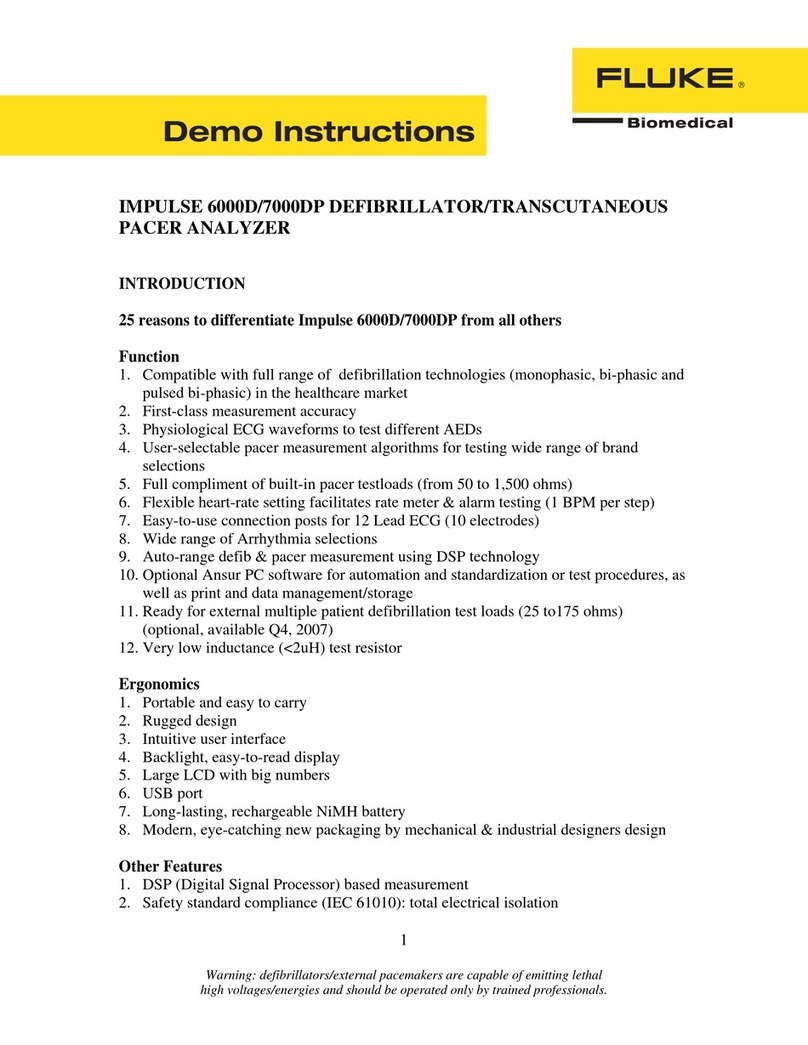
Fluke Biomedical
Fluke Biomedical IMPULSE 6000D User manual
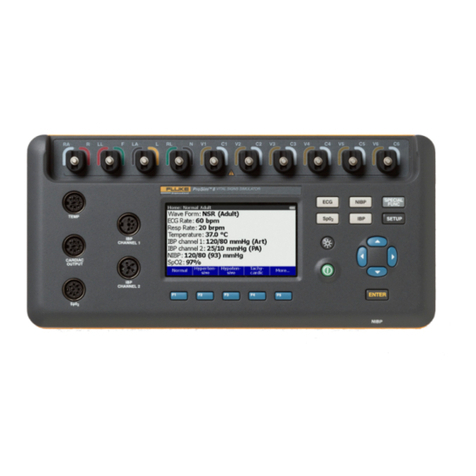
Fluke Biomedical
Fluke Biomedical ProSim 8 Series Parts list manual

Fluke Biomedical
Fluke Biomedical 190M III Series User manual
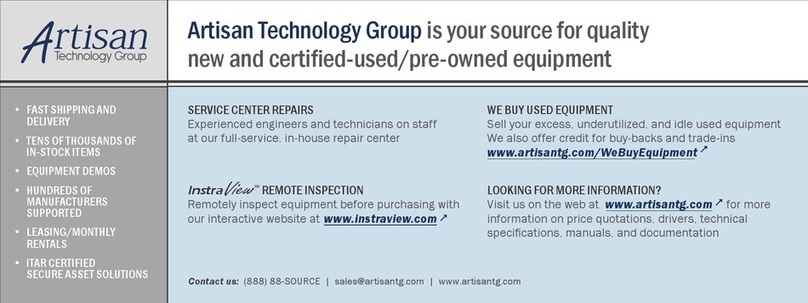
Fluke Biomedical
Fluke Biomedical ProSim 2 User manual
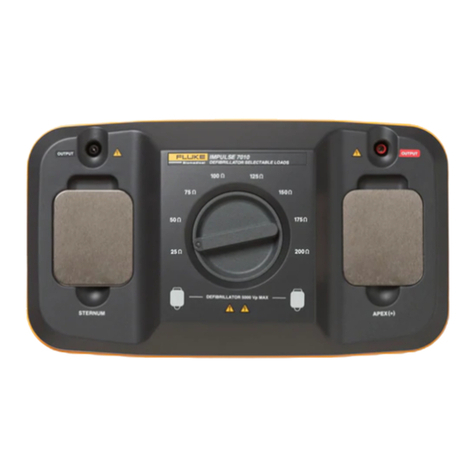
Fluke Biomedical
Fluke Biomedical 7010 User manual
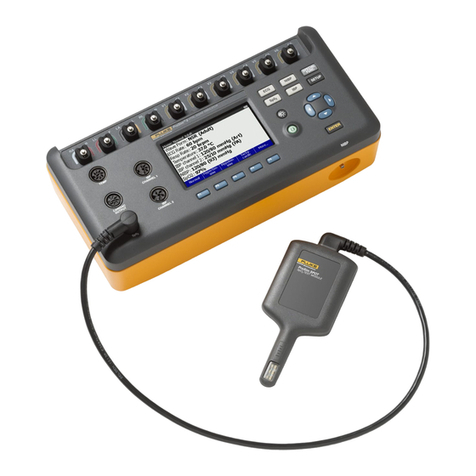
Fluke Biomedical
Fluke Biomedical ProSim 8 Series User manual
Popular Medical Equipment manuals by other brands

Shenzhen Creative Industry Co.
Shenzhen Creative Industry Co. Oxy-One Plus user manual
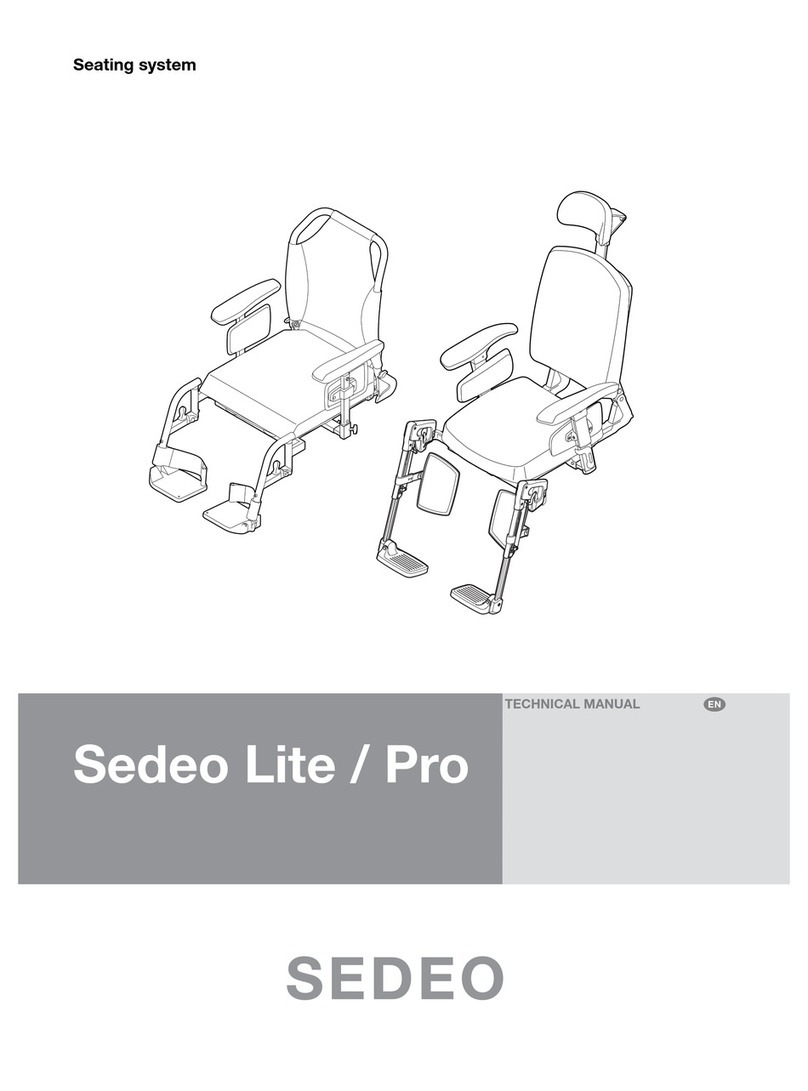
Sedeo
Sedeo Lite Technical manual
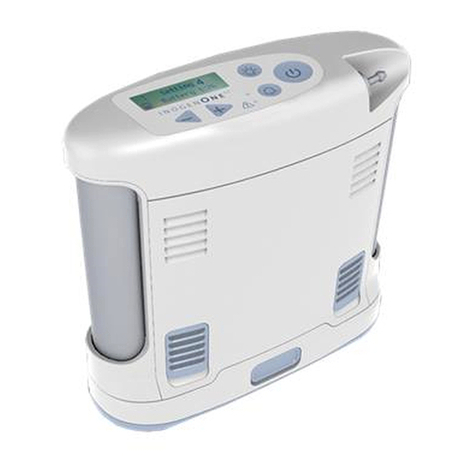
Inogen
Inogen One G3 Technical manual
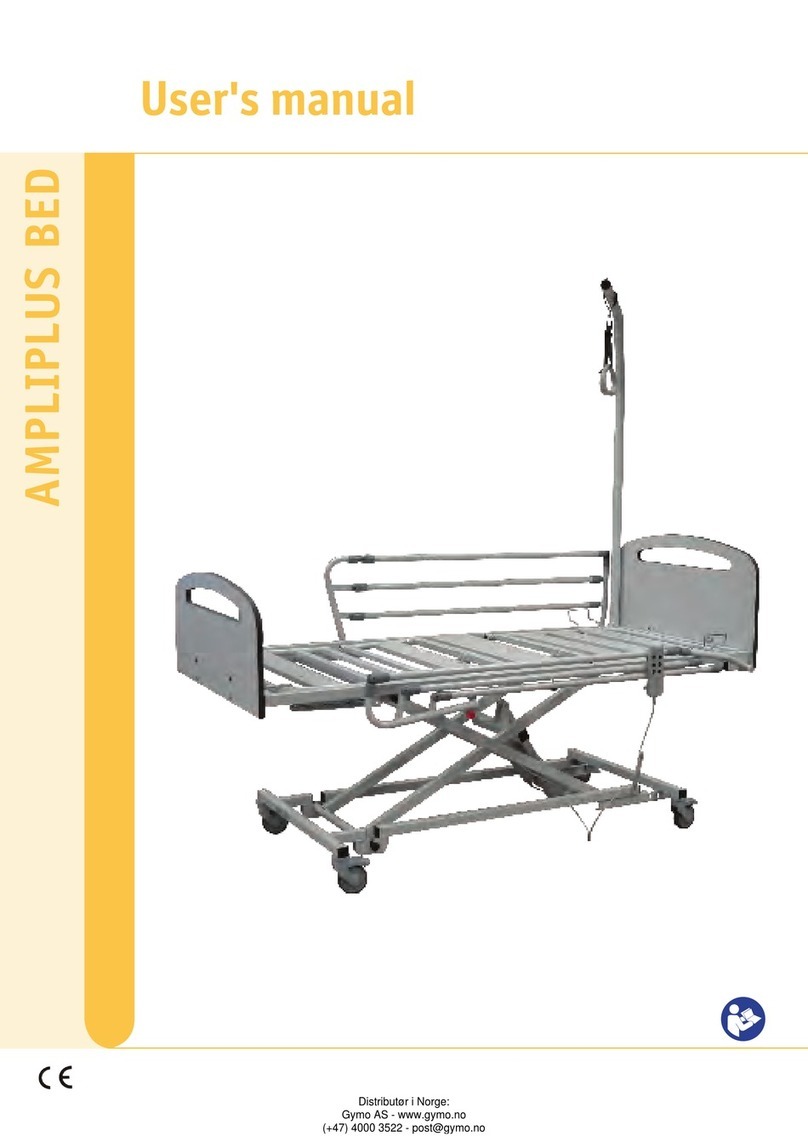
Herdegen
Herdegen AMPLIPLUS user manual
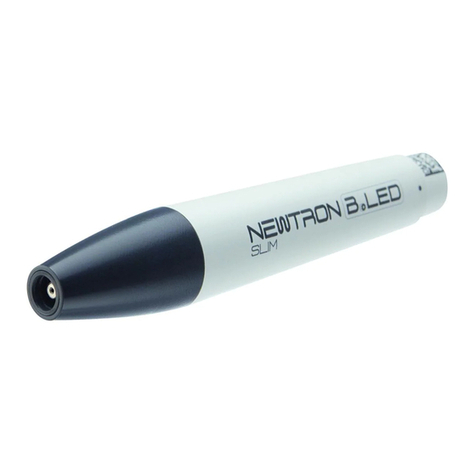
Acteon
Acteon Newtron Slim B. LED user manual

Weinmann
Weinmann COMBIBAG WM 11000 Description and operating instructions
